Science & Environment
How trip to Titanic turned from smiles to tragedy
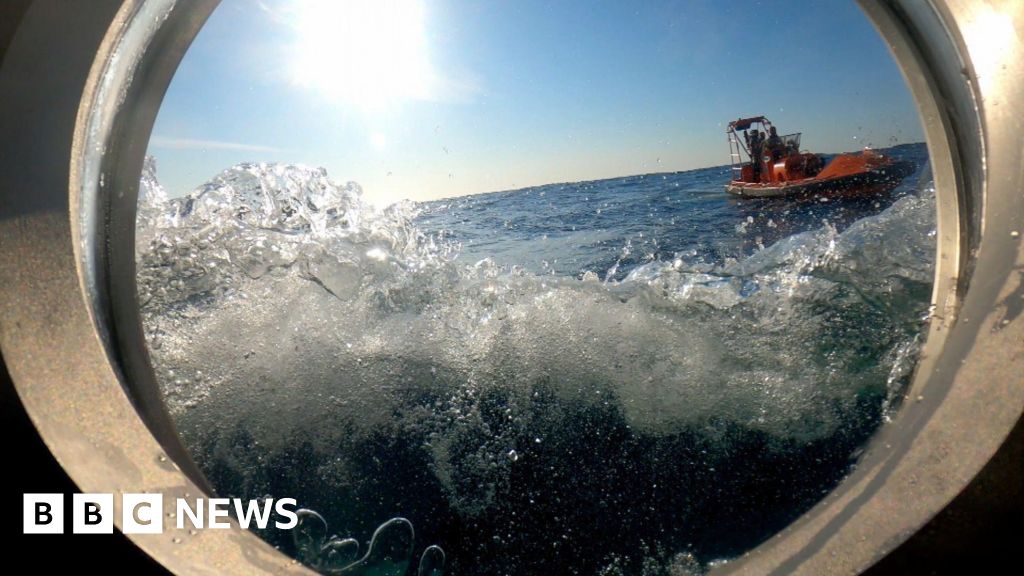
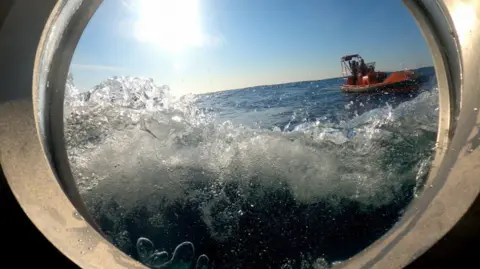 BBC
BBC“I saw five people smiling, looking forward to their journey.”
That was Renata Rojas’ recollection of her time on a support ship with five people bound for the Titanic wreck. They were about to climb into a submersible made by Oceangate.
Just 90 minutes later, these five would become the victims of a deep sea disaster: an implosion. Images from the depths of the Atlantic show the wreckage of the sub crushed, mangled, and scattered across the sea floor.
The photos were released by the US Coast Guard during an inquiry to establish what led to its catastrophic failure in June 2023.
The inquiry finished on Friday and over the past two weeks of hearings, a picture has emerged of ignored safety warnings and a history of technical problems. We have also gained new insight into the final hours of those on board.
It has shown us that this story won’t go away any time soon.
Passengers unaware of impending disaster
British explorer Hamish Harding and British-Pakistani businessman Shahzada Dawood, who’d brought his 19-year-old son Suleman along, had paid Oceangate for a dive to see the Titanic which lies 3,800m down.
The sub was piloted by the company’s CEO Stockton Rush with French Titanic expert Paul-Henri Nargeolet as co-pilot.
Once the craft had slipped beneath the waves, it could send short text messages to the surface. A message sent from about 2,300m said “All good here”.
 Supplied via Reuters / AFP
Supplied via Reuters / AFPAbout an hour and a half into the dive, from 3,346m, Titan’s final message reported it had released two weights to slow its descent as it neared the sea floor.
Communications were then lost – the sub had imploded.
The US Coast Guard said nothing in the messages that indicated that the passengers knew their craft was failing.
The implosion was instantaneous. There would have been no time to even register what was happening.
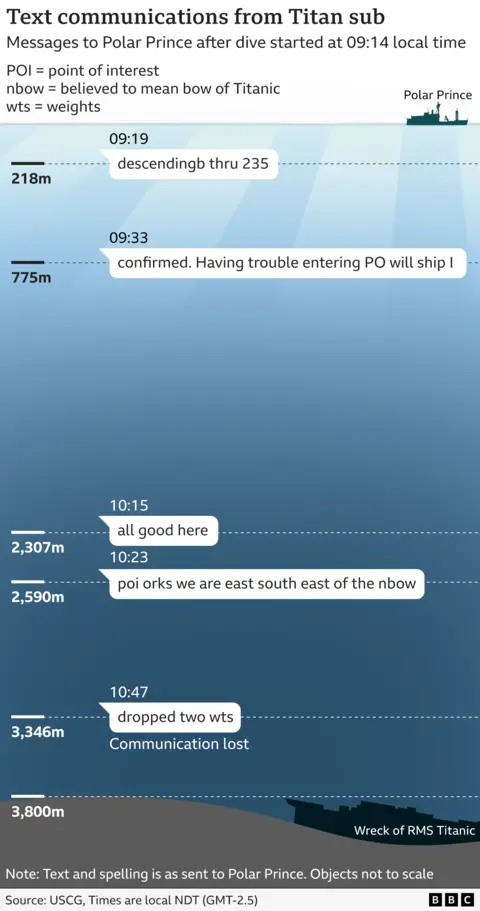
Unorthodox sub was flawed from the start
Mr Rush proudly described the Titan as “experimental”. But others had voiced their concerns to him about its unconventional design in the years prior to the dive.
At the hearing David Lochridge, Oceangate’s former director of marine operations, described Titan as an “abomination”.
In 2018, he’d compiled a report highlighting multiple safety issues, but said these concerns were dismissed and he was fired.
Titan had several unusual features.
The shape of its hull – the part where the passengers were – was cylindrical rather than spherical so the effects of the pressure were not distributed evenly.
A window was installed but only considered safe down to 1,300m. The US Coast Guard also heard about problems with the joins between different parts of the sub.
The hull’s material attracted the most attention – it was made from layers of carbon fibre mixed with resin.
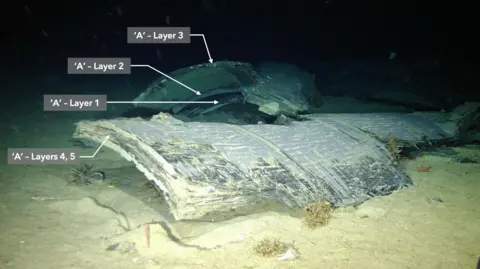 US Coastguard
US CoastguardRoy Thomas from the American Bureau of Shipping said carbon fibre was not approved for deep sea subs because it can weaken with every dive and fail suddenly without warning.
The National Transportation and Safety Board (NTSB) presented an analysis of samples of Titan’s hull left over from its construction.
It showed areas where the carbon fibre layers had separated – a known problem called delamination – as well as wrinkles, waviness and voids within its structure.
This suggests the material contained imperfections before the sub had even made a dive.
The NTSB team also saw this delamination in wreckage found on the seafloor.
Most of the hull was destroyed, but in the pieces that survived, the carbon fibre has split into layers and in some places had cracked.
Officials are not currently saying the hull’s failure caused the implosion, but it’s a key focus of the investigation.
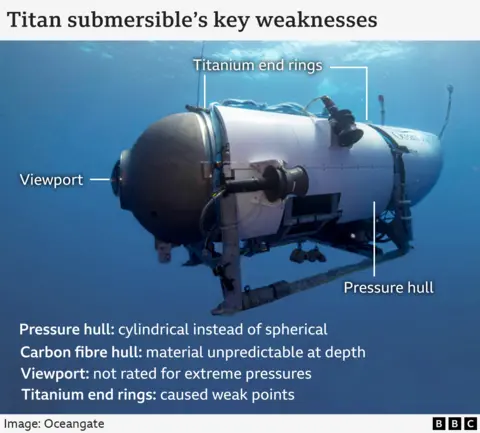
Loud bang – a missed warning sign
A place on the sub cost up to $250,000 (£186,000) – and over the course of 2021 and 2022 Titan made 23 dives, 12 of which successfully reached the wreck of the Titanic.
But these descents were far from problem free. A dive log book recorded 118 technical faults, ranging from thrusters failing, to batteries dying – and once the front dome of the sub fell off.
The investigation focused on a dive that took place in 2022, when paying passenger Fred Hagen heard an “alarming” noise as the sub was returning to the surface.
“We were still underwater and there was a large bang or cracking sound,” he said.
“We were all concerned that maybe there was a crack in the hull.”
He said Mr Rush thought the noise was the sub shifting in the metal frame that surrounded it.
The US Coast Guard inquiry was shown new analysis of data from the sub’s sensors, suggesting the noise was caused by a change in the fabric of the hull.
This affected how Titan was able to respond to the pressures of the deep.
Phil Brooks, Oceangate’s former Engineering Director, said the craft wasn’t properly checked after that dive because the company was struggling financially, and instead it was left for months on the dockside in Canada.
Boss was convinced his sub was safe
“I’m not dying. No-one is dying on my watch – period.”
These were the words of Mr Rush in a 2018 transcript of a meeting at Oceangate HQ.
When questioned about Titan’s safety, he replied: “I understand this kind of risk, and I’m going into it with eyes open and I think this is one of the safest things I will ever do.”
According to some witnesses Mr Rush had an unwavering belief in his sub. They described a dominating personality who wouldn’t tolerate dissenting views.
“Stockton would fight for what he wanted… and he wouldn’t give an inch much at all,” said Tony Nissen, a former engineering director.
“Most people would just eventually back down from Stockton.”
Passenger Fred Hagen disagreed, describing Mr Rush as a “brilliant man”.
“Stockton made a very conscious and astute effort to maintain a perceptible culture of safety around a high risk environment.”

US authorities knew of safety concerns
Former employee David Lochridge was so worried about Titan that he went to the Occupational Safety and Health Administration (OSHA).
This is the US government body that sets and enforces workplace safety standards.
Correspondence reveals that he provided extensive information about the sub’s problems – and was placed on OSHA’s whistleblower witness protection scheme.
But he said OSHA were slow and failed to act, and after increasing pressure from Oceangate’s lawyers, he dropped the case and signed a non disclosure agreement.
He told the hearing: “I believe that if OSHA had attempted to investigate the seriousness of the concerns I raised on multiple occasions this tragedy may have been prevented.”
Sub safety rules need to change
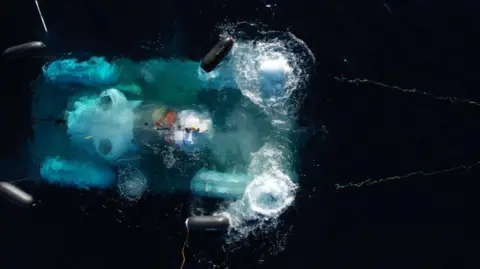
Deep-sea subs can undergo an extensive safety assessment by independent marine organisations such as the American Bureau of Shipping (ABS) or DNV (a global accreditation organisation based in Norway).
Almost all operators complete this certification process, but Oceangate chose not to for Titan. At the hearing, some industry experts called for it to become compulsory.
“I think as long as we insist on certification as a requirement for continued human occupied exploration in the deep sea we can avoid these kinds of tragic outcomes,” said Patrick Lahey, CEO of Triton submarines.
Story isn’t over yet
Witnesses at the hearing included former Oceangate employees, paying passengers who’d made dives in the sub, industry experts and those involved in the search and rescue effort.
But some key people were noticeably missing.
Mr Rush’s wife Wendy, who was Oceangate’s communications director and played a central role in the company, did not appear. Nor did director of operations and sub pilot Scott Griffith or former US Coast Guard Rear Admiral John Lockwood, who was on Oceangate’s board.
The reasons for their absences were not given and their version of events remain unheard.
The US Coast Guard will now put together a final report with the aim of preventing a disaster like this from ever happening again.
But the story will not end there.
Criminal prosecutions may follow. And private lawsuits too – the family of French diver PH Nargeolet is already suing for more than $50 million.
The ripples from this deep sea tragedy are likely to continue for many years.
Science & Environment
SpaceX capsule docks at ISS to collect stranded astronauts
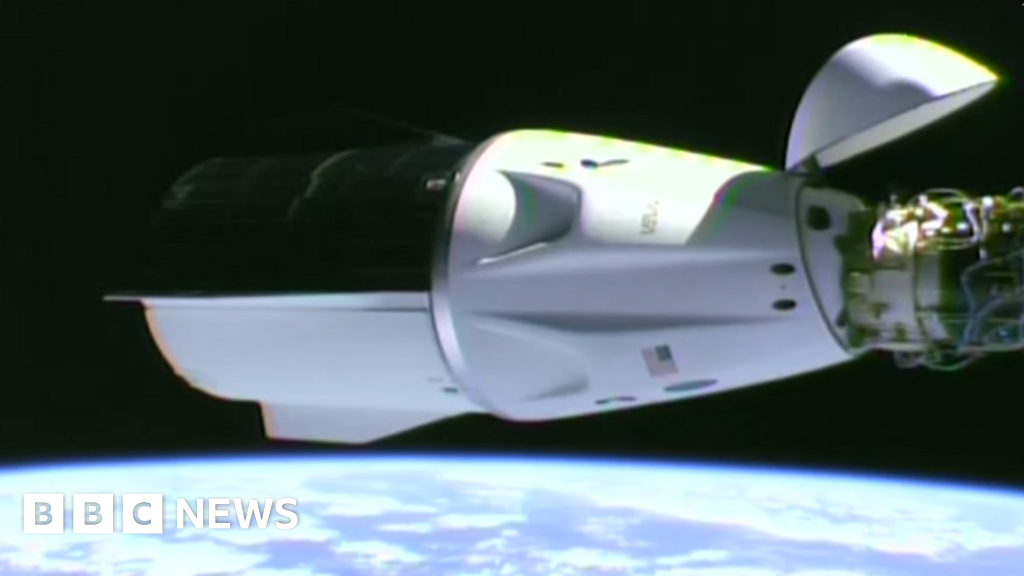
A SpaceX capsule sent to bring back two astronauts stranded on the International Space Station (ISS) has docked.
The Dragon capsule, which has two empty seats for Butch Wilmore and Suni Williams, docked at 17:30 eastern time (22:30 BST).
The pair arrived at the station on Boeing’s new Starliner capsule for an eight-day mission in June, but were forced to remain there because of a fault discovered during the flight.
They are now expected to return to Earth in February.
The Dragon capsule lifted off from Cape Canaveral, Florida on Saturday carrying Nasa astronaut Nick Hague and Russian cosmonaut Alexander Gorbunov.
Hague, who has done a previous stint on the ISS, and Gorbunov will join the space station’s crew before taking Wilmore and Williams back to Earth.
The launch had been scheduled for Thursday but was delayed because of Hurricane Helene, which has caused huge destruction across the south-eastern US, including Florida, in recent days.
The docking occurred as the space station flew 265 miles (426km) above Botswana in southern Africa.
Footage from inside the ISS showed Hague and Gorbunov smiling and posing for photos with the rest of the crew after their arrival.
The original Starliner flight, which launched on 5 June, was that capsule’s first test flight with astronauts on board and Boeing’s first attempt to take astronauts to the ISS.
During the flight it experienced a number of problems, including leaks of helium – which is used in its propulsion system – and issues with several of its thrusters.
Engineers at Boeing and Nasa spent months investigating, but in late August Nasa decided that it would not be safe to try to bring Wilmore and Williams home aboard the Starliner.
The capsule had already been delayed for several years because of setbacks during its development, as well as issues discovered during uncrewed test flights in 2019 and 2022.
Nasa retired its space shuttle fleet in 2011, leaving the agency reliant on Russia’s Soyuz craft to get to and from the ISS.
Having two American companies to perform the missions has been a key goal for some time, and in 2014 Boeing and SpaceX were awarded contracts worth $4.2bn (£3.2bn) and $2.6bn (£2bn) respectively.
In 2020, SpaceX – founded by billionaire Elon Musk – became the first private company to take astronauts to the ISS.
Science & Environment
SpaceX capsule begins rescue mission to return stranded astronauts
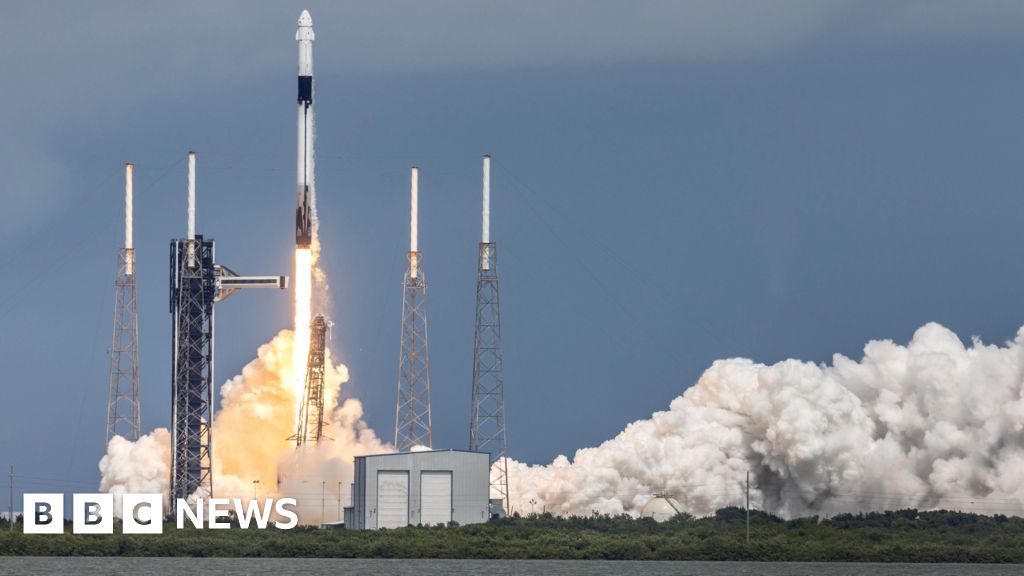
SpaceX has launched its mission to bring back two astronauts stranded on the International Space Station (ISS) since June.
The Dragon capsule, which has two empty seats for Butch Wilmore and Suni Williams, lifted off from Cape Canaveral, Florida on Saturday.
The pair’s mission at the space station had only been expected to last about eight days but after a fault was found on the new Boeing Starliner it returned to Earth empty as a precaution.
Nasa astronaut Nick Hague and Russian cosmonaut Alexander Gorbunov are flying with fresh supplies for Butch and Suni and expect to bring them home in February.
The Dragon launch had been scheduled for Thursday but was delayed because of Hurricane Helene, which has left a trail of destruction through Florida, north through Georgia and into Tennessee and the Carolinas.
SpaceX, founded by billionaire Elon Musk, has been ferrying crews to and from the ISS every six months.
The Dragon is expected to dock with the ISS on Sunday at around 21:30 GMT.
Under a contract between Nasa and Roscosmos, the Russian federal space agency, three-seat Russian Soyuz spacecraft carry one Nasa astronaut on each flight to the ISS and a cosmonaut flies on each four-seat Dragon.
Science & Environment
Book excerpt: “Revenge of the Tipping Point” by Malcolm Gladwell
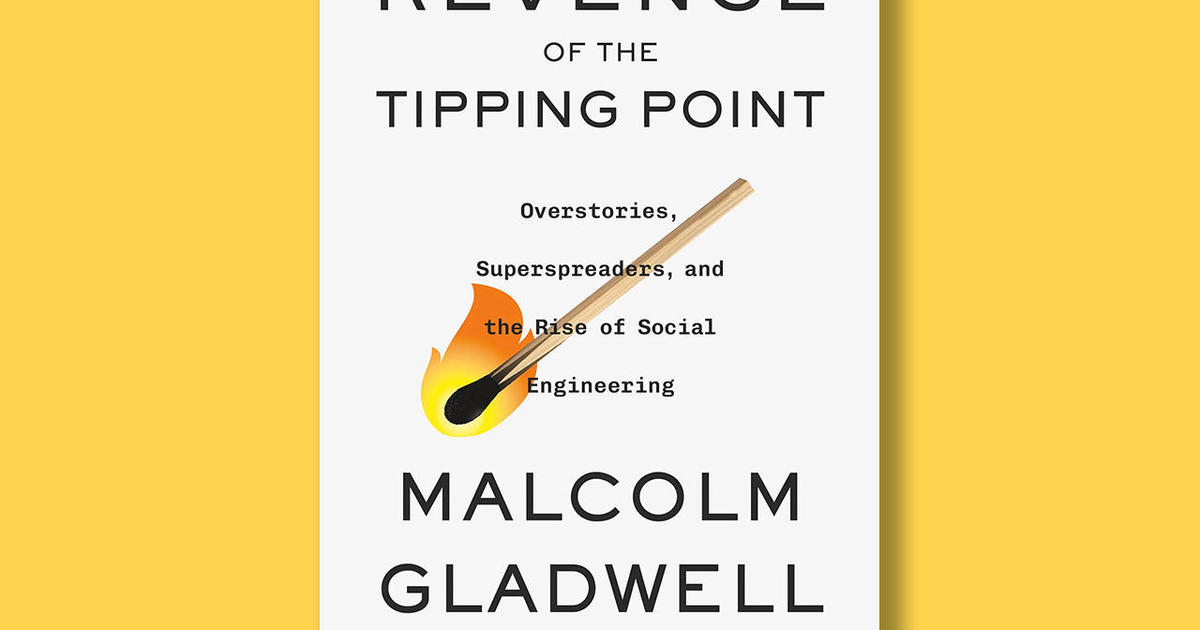
We may receive an affiliate commission from anything you buy from this article.
In 2000, Malcolm Gladwell published the first of several bestselling books, “The Tipping Point,” in which he applied the laws of epidemics to promote positive social change. Now, he’s returned to that optimistic book’s lessons in “Revenge of the Tipping Point” (to be published October 1 by Little, Brown & Co.), to examine the flip side of those theories.
The new book’s topics range from cheetah reproduction and the Harvard women’s rugby team to the Holocaust.
Read the excerpt below, and don’t miss David Pogue’s interview with Malcolm Gladwell on “CBS Sunday Morning” September 29!
“Revenge of the Tipping Point” by Malcolm Gladwell
Prefer to listen? Audible has a 30-day free trial available right now.
In the 1970s, zookeepers around the world began to invest more and more resources in breeding their animal populations in captivity. The logic was clear. Why go to all the trouble of capturing animals in the wild? The growing conservation movement also favored breeding programs. The new strategy was a big success — with one big outlier: the cheetah.
“They seldom had offspring that survived, and many of them when put together couldn’t breed,” remembers the geneticist Stephen O’Brien, who was then working at the National Cancer Institute.
It didn’t make sense. The cheetah seemed a perfect example of evolutionary fitness: a massive nuclear reactor for a heart, the legs of a greyhound, a skull shaped like a professional cyclist’s aerodynamic helmet, and semi-retractable claws that, as O’Brien puts it, “grip the earth like football cleats as they race after their prey at sixty miles per hour.”
“It’s the fastest animal on earth,” O’Brien said. “The second fastest animal on earth is the American pronghorn. And the reason that it’s the second-fastest is that it was running from the cheetahs.”
The zookeepers wondered if they were doing something wrong, or whether there was something about the make-up of the cheetah that they didn’t understand. They came up with theories and tried experiments — all to no avail. In the end, they shrugged and said that the animals must be “skittish.”
Things came to a head at a meeting in 1980 in Front Royal, Virginia. Zoo directors from around the world were there, among them the head of a big wildlife-conservation program in South Africa.
“And he says, ‘Do you have anybody that knows what they’re doing scientifically?’ ” O’Brien remembers. ” ‘[To] basically explain to us why our breeding program of cheetahs in South Africa has something like 15 percent success while the rest of these animals — elephants and horses and giraffes — they breed like rats?’ “
Two scientists raised their hands — both colleagues of O’Brien’s. They flew to South Africa, to a big wildlife sanctuary near Pretoria. They took blood and sperm samples from dozens of cheetahs. What they found astonished them. The sperm counts of the cheetahs were low. And the spermatozoa themselves were badly malformed. That was clearly why the animals had such trouble breeding. It wasn’t that they were “skittish.”
But why? O’Brien’s laboratory then began testing the blood samples that had been sent to them. They had done similar studies in the past on birds, humans, horses, and domestic cats, and in all those cases the animals showed a healthy degree of genetic diversity: In most species, around 30 percent of sampled genes will show some degree of variation. The cheetah’s genes looked nothing like that. They were all the same. “I never saw a species that was so genetically uniform,” O’Brien said.
O’Brien’s findings were greeted with skepticism by his colleagues. So he and his team kept going.
“I went down to Children’s Hospital in Washington and I learned how to do skin grafts at a burn unit,” he said. “They taught me how to keep it sterile and how to take the . . . slices and how to suture it up and everything. And then we did [skin grafts on] about eight cheetahs in South Africa, and then we did another six or eight in Oregon.”
Winston, Oregon, was home to the Wildlife Safari, the largest collection of cheetahs in the United States at the time.
The idea was simple. If you graft a piece of skin from one animal onto another, the recipient’s body will reject it. It will recognize the genes of the donor as foreign. “It would blacken and slough off in two weeks,” O’Brien said. But if you take a patch of skin from, say, one identical twin and graft it onto another, it will work. The donor’s immune system thinks the skin is its own. This was the ultimate test of his hypothesis.
The grafts were small — one inch by one inch, sewn onto the side of the animal’s chest, protected by an elastic bandage wrapped around the cat’s body. First, the team gave some of the cheetahs a skin graft from a domestic cat, just to make sure the animals had an immune system. Sure enough, the cheetahs rejected the cat graft: It got inflamed, then necrotic. Their bodies knew what different was — and a domestic cat was different. Then the team grafted skin from other cheetahs. What happened? Nothing! They were accepted, O’Brien said, “as if they were identical twins. The only place you see that is in inbred mice that have been brother-sister mated for twenty generations. And that convinced me.”
O’Brien realized that the world’s cheetah population must have at some point been devastated. His best guess was that it happened during the great mammal die-off 12,000 years ago — when saber-toothed cats, mastodons, mammoths, giant ground sloths, and over thirty other species were wiped out by an ice age. Somehow the cheetah survived. But just barely.
“The numbers that fit all the data are less than one hundred, maybe less than fifty,” O’Brien said. It’s possible, in fact, that the cheetah population was reduced to a single pregnant female. And the only way for those lonely few cheetahs to survive was to overcome the inhibition that most mammals have against incest: Sisters had to mate with brothers, first cousins with first cousins. The species eventually rebounded, but only through the endless replication of the same narrow set of genes. The cheetah was still magnificent. But now every cheetah represented the exact same kind of magnificence.
From “Revenge of the Tipping Point: Overstories, Superspreaders, and the Rise of Social Engineering” by Malcolm Gladwell. Copyright © 2024 by Malcolm Gladwell. Reprinted by permission of Little, Brown and Company, a division of Hachette Book Group. All rights reserved.
Get the book here:
“Revenge of the Tipping Point” by Malcolm Gladwell
Buy locally from Bookshop.org
For more info:
Science & Environment
Penguin chicks miraculously survive tearaway iceberg
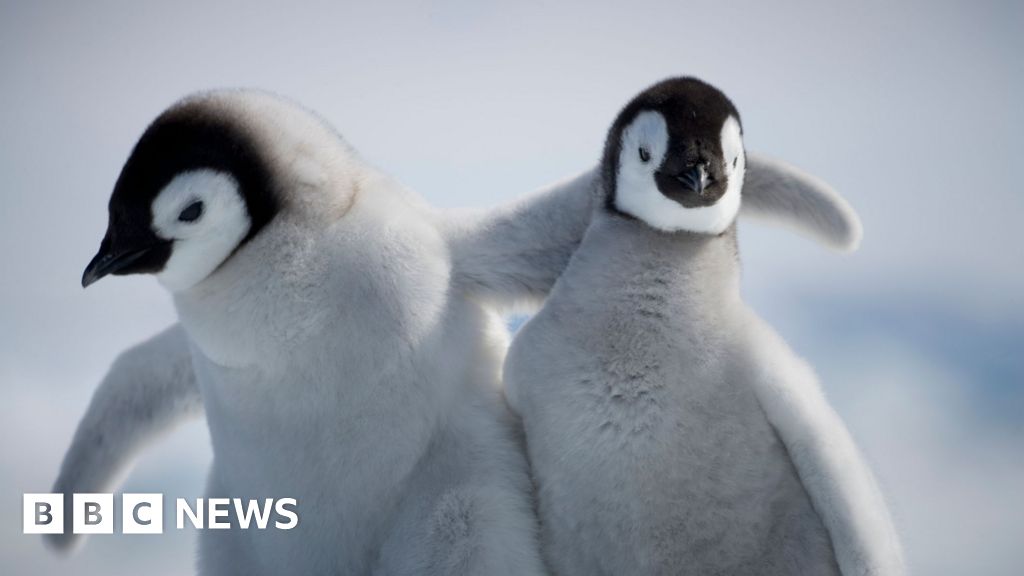
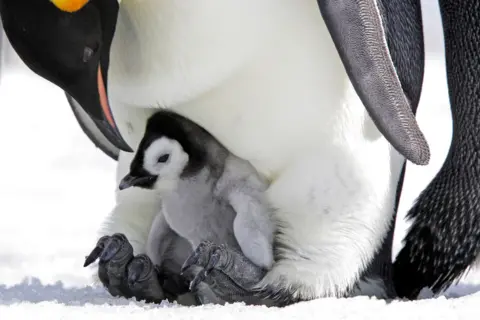 Getty Images
Getty ImagesIn May a huge iceberg broke off from an Antarctic ice shelf, drifted, and came to a stop – right in front of “maybe the world’s unluckiest” penguins.
Like a door shutting, the iceberg’s huge walls sealed off the Halley Bay colony from the sea.
It seemed to spell the end for hundreds of newly-hatched fluffy chicks whose mothers, out hunting for food, may no longer have been able to reach them.
Then, a few weeks ago, the iceberg shifted and got on the move again.
Scientists have now discovered that the tenacious penguins found a way to beat the colossal iceberg – satellite pictures seen exclusively by BBC News this week show life in the colony.
But scientists endured a long, anxious wait until this point – and the chicks face another potentially deadly challenge in the coming months.
 BAS Mapping and Geographic Information Centre/Copernicus Sentinel 2024
BAS Mapping and Geographic Information Centre/Copernicus Sentinel 2024In August, when we asked the British Antarctic Survey if the emperor penguins had survived, they couldn’t tell us.
“We will not know until the sun comes up,” said scientist Peter Fretwell.
It was still Antarctic winter so satellites couldn’t penetrate the total darkness to take pictures of the birds.
This label of “maybe the world’s unluckiest penguins” comes from Peter, who has shared the penguins’ ups and downs for years.
These creatures teeter on the edge of life and death, and this was just the latest in a string of near-misses.
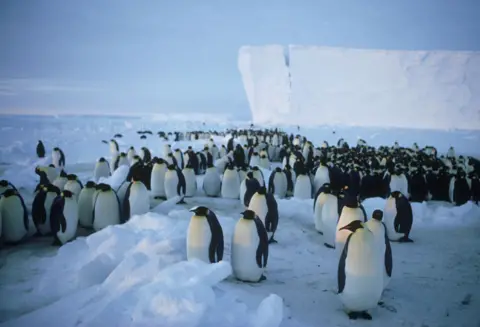 Getty Images
Getty ImagesTeetering between life and death
It was once a stable colony and with 14,000 – 25,000 breeding pairs annually, the second biggest in the world.
But in 2019, news came of a catastrophic breeding failure. Peter and his colleagues discovered that for three years the colony had failed to raise any chicks.
Baby penguins need to live on sea ice until they are strong enough to survive in open water. But climate change is warming the oceans and air, contributing to sea ice becoming more unstable and prone to sudden disintegration in storms.
With no sea ice, the chicks drowned.
A few hundred stragglers moved their home to the nearby MacDonald Ice rumples and kept the group going.
That is until A83 iceberg, which at 380 sq km (145 sq miles) is roughly the size of the Isle of Wight, calved off the Brunt Ice Shelf in May.
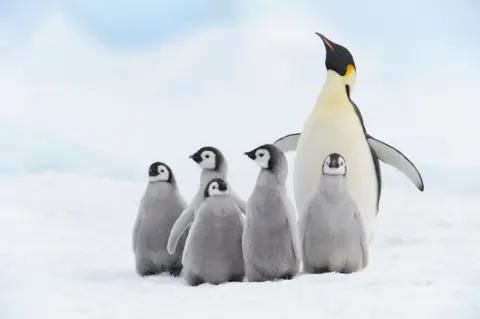 Getty Images
Getty ImagesMoment of truth for chicks
Peter feared a total wipe-out. It has happened to other penguin colonies – an iceberg blocked a group in the Ross Sea for several years, leading to no breeding success, he explains.
A few days ago, the sun rose again in Antarctica. The Sentinel-1 satellites that Peter uses orbited over Halley Bay, taking pictures of the ice sheet.
Peter opened the files. “I was dreading seeing that there wouldn’t be anything there at all,” he says. But, against the odds, he found what he hoped for – a brown smudge on the white ice sheet. The penguins are alive.
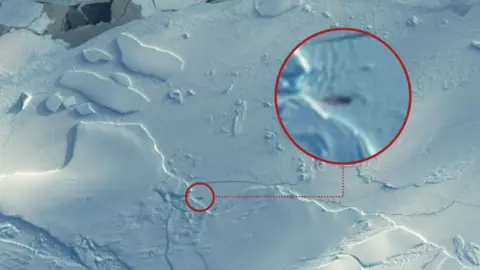 BAS/Copernicus
BAS/Copernicus“It was a huge relief,” he says.
But how they survived remains a mystery. The iceberg could be around 15m (49ft) tall, meaning the penguins could not climb it.
“There’s an ice crack, so they might have been able to dive through it,” he says.
The iceberg probably extends more than 50m beneath the waves, but penguins can dive up to 500m, he explains.
“Even if there is just a small crack, they might have dived underneath it,” he says.
More jeopardy for colony awaits
 Copernicus Sentinel data processed by ESA
Copernicus Sentinel data processed by ESAThe team will now wait for higher-resolution pictures that show exactly how many penguins are there.
Scientists at the British research base at Halley will visit to verify the size and health of the colony.
But Antarctica remains a rapidly changing region affected by our warming planet, as well as natural phenomena that make life difficult there.
The MacDonald Ice rumples where the penguins now live is dynamic and unpredictable, and Antarctic seasonal sea ice levels are close to record lows.
As A83 moved, it changed the ice topography, meaning the penguins’ breeding site is now “more exposed”, Peter says.
Cracks have appeared in the ice and the edge with the sea is getting closer day-by-day.
If the ice breaks up under the chicks before they are able to swim, in around December, Peter warns they will perish.
“They’re such incredible animals. It’s a bit bleak. Like many animals in Antarctica, they live on the sea ice. But it is changing, and if your habitat changes then it’s never good,” he says.
Science & Environment
50 “exceptionally well-preserved” Viking skeletons unearthed in Denmark
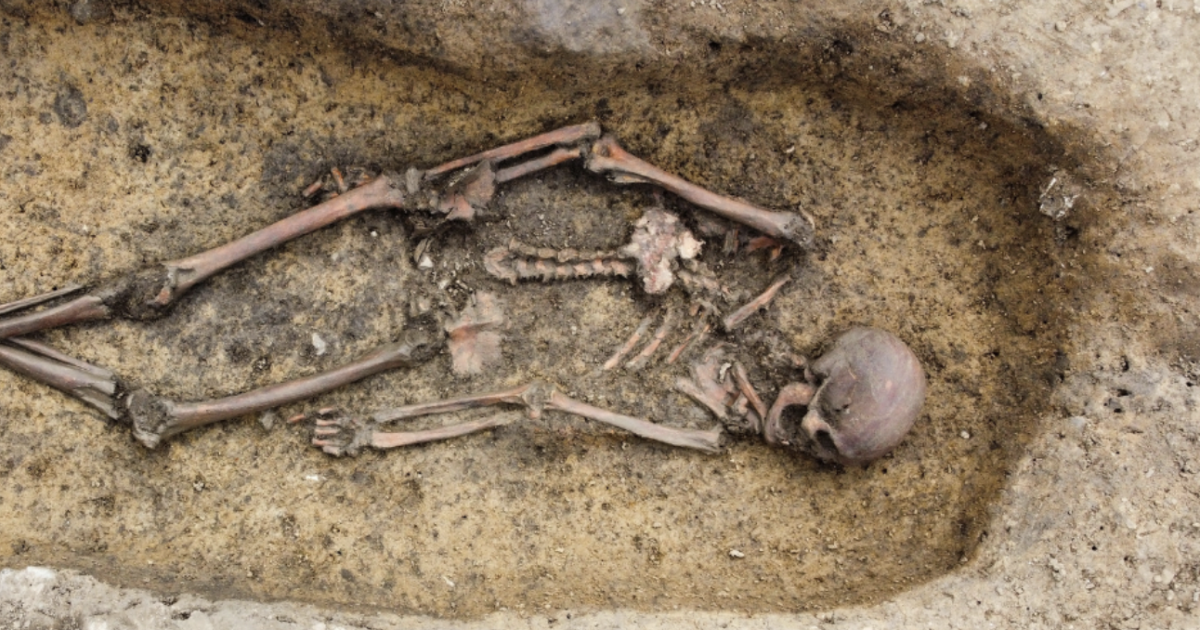
Archaeologists said they’ve unearthed more than 50 well-preserved Viking skeletons over the past six months, providing rare insights into how the sea-faring society lived and traveled.
“This discovery offers extraordinary opportunities to perform a wide range of scientific analyses, which can reveal more about the general health, diet, and origins of those buried,” said Michael Borre Lundø, archaeologist and curator at Museum Odense, in a statement.
He added that it was “truly unusual” to find so many well-preserved skeletons at once.
The 2,000-square-meter Viking burial ground was used during the 9th and 10th centuries. It was discovered on the southern outskirts of the village of Åsum.
The skeletons are so well-preserved archaeologists believe they will be able to pull DNA samples for scientific analysis. Subsequent analysis might reveal whether some of the buried Vikings were related — something that had never been examined in similar grave findings, said Borre Lundø.
“It will be incredibly exciting to learn where these people came from and whether the same families were buried here across multiple generations,” said Sarah Croix, associate professor at Aarhus University in Denmark.
Several skeletons had high standing in society, the archaeologists said, as evidenced by one of the women being buried in a wagon hull — likely the wagon she traveled in. She was buried along with a beautiful glass bead necklace, an iron key, a knife with a silver-threaded handle, and a small shard of glass that may have served as an amulet.
There was a finely decorated wooden chest at the foot of the wagon. Archaeologists do not know what was inside of the chest, but imagine the woman was buried with all of her finest things.
Other skeletons were found buried with jewelry, including one female with a metal ring around her neck, another with a single red glass bead hanging on a cord, and another with a special buckle on.
Recent Viking discoveries include nearly 300 silver coins believed to be more than 1,000 years old, which were discovered in 2023 near a Viking fortress site in northwestern Denmark. And a large Viking burial site was discovered in 2020 by Norwegian archaeologists.
Science & Environment
America’s coal communities could help the U.S. triple nuclear power
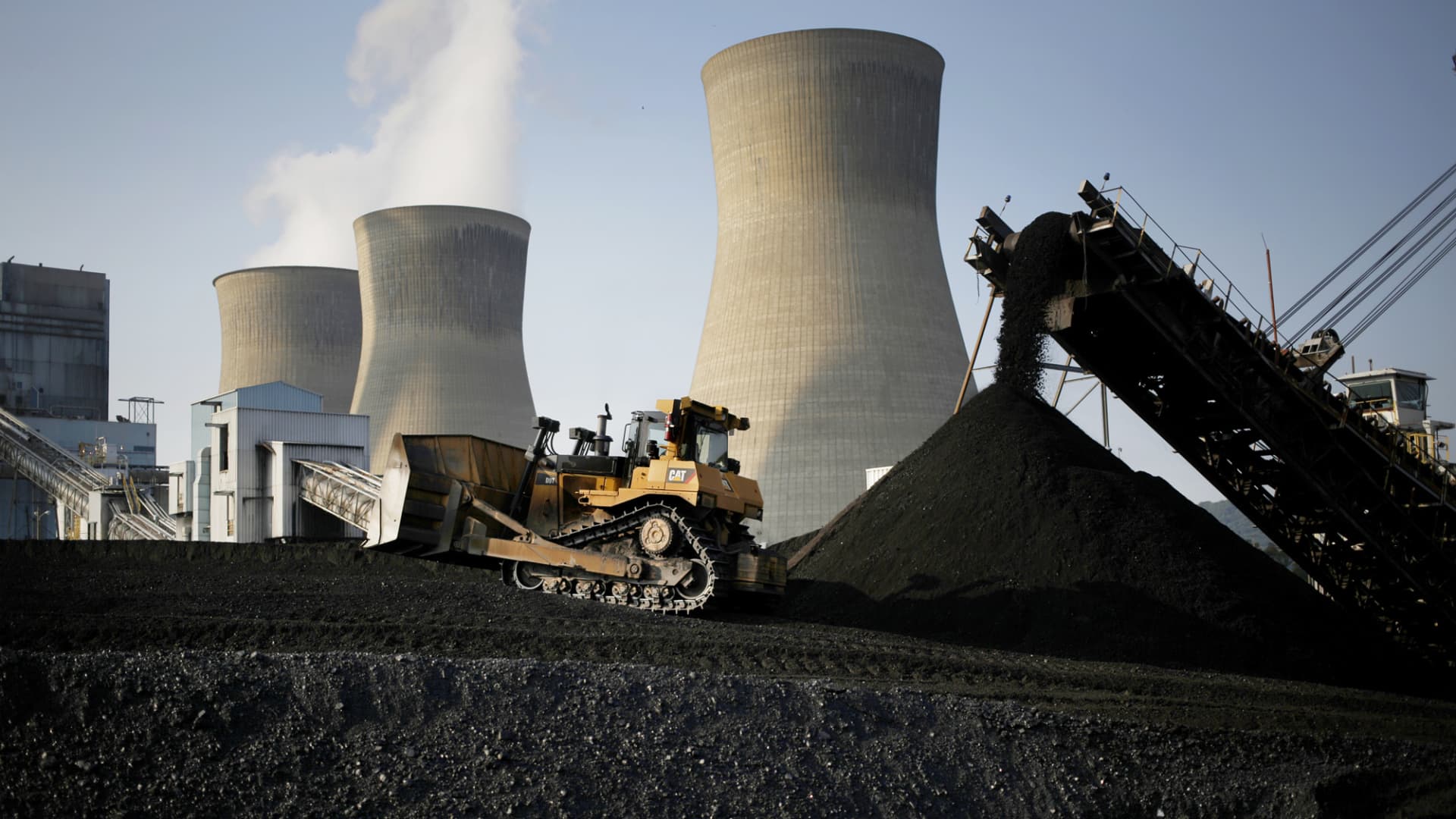
A bulldozer moves coal that will be burned to generate electricity at the American Electric Power coal-fired power plant in Winfield, West Virginia.
Luke Sharrett | Bloomberg | Getty Images
The planned restart of Three Mile Island is a step forward for nuclear power, but the U.S. needs to deploy new plants to keep up with rising electricity demand, one of the nation’s top nuclear officials said this week.
The U.S. needs to at least triple its nuclear fleet to keep pace with demand, slash carbon-dioxide emissions and ensure the nation’s energy security, said Mike Goff, acting assistant secretary for the Office of Nuclear Energy at the Department of Energy.
The U.S. currently maintains the largest nuclear fleet in the world with 94 operational reactors totaling about 100 gigawatts of power. The fleet supplied more than 18% of the nation’s electricity consumption in 2023.
The U.S. needs to add 200 gigawatts of nuclear, Goff told CNBC in an interview. This is roughly equivalent to building 200 new plants, based on the current average reactor size in the U.S. fleet of about a gigawatt.
“It’s a huge undertaking,” Goff said. The U.S. led a global coalition in December that formally pledged to meet this goal by 2050. Financial institutions including Goldman Sachs and Bank of America endorsed the target at a climate conference in New York City this week.
Constellation Energy‘s plan to restart Three Mile Island by 2028 is a step in the right direction, Goff said. The plant operated safely and efficiently, only shutting down in 2019 for economic reasons, he said.
The reactor that Constellation plans to re-open, Unit 1, is not the one the partially melted down in 1979.
Microsoft will purchase electricity from the plant to help power its data centers. Goff said the advent of large data centers that consume up to a gigawatt of electricity only reinforces the need for new reactors.
“A lot of the data centers are coming in and saying they do need firm, 24/7, baseload clean electricity,” Goff said. “Nuclear is obviously a perfect match for that,” he said.
But restarting reactors in the U.S. will only provide a small fraction of the nuclear power that is needed, he said. There are only a handful of shuttered plants that are potential candidates for restarts, according to Goff.
“It’s not a huge number,” Goff said of potential restarts. “We need to really be moving forward also on deploying plants,” he said.
From coal to nuclear
Coal communities across the U.S. could provide a runway to build out a large number of new nuclear plants. Utilities in many parts of the U.S. are phasing out coal as part of the clean energy transition, creating a supply gap in some regions because new generation is not being built fast enough.
Recently shuttered coal plants, those expected to retire, and currently operating plants with no estimated shutdown date yet could provide space for up to 174 gigawatts of new nuclear across 36 states, according to a Department of Energy study published earlier this month.
Coal plants already have transmission lines in place, allowing reactors at those sites to avoid the long process of siting new grid connections, Goff said. The plants also have people experienced in the energy industry who could transition to working at a nuclear facility, he said.
“We can actually get a significant cost reduction by building at a coal plant,” Goff said. “We can maybe get a 30% cost reduction compared to just going on a greenfield site.”
Cost overruns and long timelines are major hurdles for building new nuclear plants. The expansion of the Vogtle plant in Georgia with two new reactors, for example, cost more than $30 billion and took around seven years longer than expected.
Expanding operational nuclear plants and building at retired sites in the U.S. could create a pathway for up to 95 gigawatts worth of new reactors, according to the DOE study. Between coal and nuclear sites, the U.S. potentially has space for up to 269 gigawatts of additional nuclear power.
The potential capacity would depend on whether advanced, smaller reactors are built at the sites, or larger reactors with a gigawatt or more of power.
More electricity could potentially be generated if the smaller reactors were rolled out on a large scale because there is space for more them, according to the DOE study. Some of these smaller advanced designs, however, are still years away from commercialization.
But rising electricity demand from data centers, manufacturing and the electrification of the economy could provide a catalyst to build the larger plants as well, according to Goff. The Three Mile Island restart, for example, would bring back just under a gigawatt of power to meet Microsoft’s needs.
“That increased power demand, that will lead toward an additional push toward those gigawatt size reactors as well,” he said.
Restarts likely to secure greenlight
While reactor restarts aren’t a silver bullet, shoring up and maintaining the existing fleet is crucial, Goff said. The U.S. went through a decade-long period in which reactors were shutting down because they could not compete with cheap, abundant natural gas.
The economics are changing, however, with tax support from the Inflation Reduction Act and nuclear increasingly valued for its carbon-free attributes, Goff said.
“One of the issues with the economics, especially in the non-regulated utilities, was there was no value necessarily for clean, baseload electricity,” he said. “There is a lot more recognition of the need for that clean, firm, reliable baseload for nuclear”
Constellation’s decision to restart Three Mile Island follows in the footsteps of the Palisades nuclear plant in Michigan. The private owner, Holtec International, plants to restart Palisades in 2025. The two restarts are subject to review and approval by the Nuclear Regulatory Commission.
“They are an independent agency, but I expect if the safety cases are presented, they’re going to approve it,” Goff said of those potential restarts.
“Constellation obviously operated the Three Mile Island plant for years, and has a very large fleet of reactors that they’ve operated safely and efficiently,” he said. “They will continue to have a great expertise in moving those plants to continue their safe operation.”
But finding additional plants to restart could prove difficult, said Doug True, chief nuclear officer at the Nuclear Energy Institute.
“It gets harder and harder,” True previously told CNBC. “A lot of these plants have already started the deconstruction process that goes with decommissioning and the facility wasn’t as thoroughly laid up in a way that was intended to restart in any way.”
-

 Womens Workouts7 days ago
Womens Workouts7 days ago3 Day Full Body Women’s Dumbbell Only Workout
-

 Technology2 weeks ago
Technology2 weeks agoWould-be reality TV contestants ‘not looking real’
-

 News1 week ago
News1 week agoOur millionaire neighbour blocks us from using public footpath & screams at us in street.. it’s like living in a WARZONE – WordupNews
-

 Science & Environment2 weeks ago
Science & Environment2 weeks ago‘Running of the bulls’ festival crowds move like charged particles
-

 Science & Environment2 weeks ago
Science & Environment2 weeks agoHyperelastic gel is one of the stretchiest materials known to science
-

 Science & Environment2 weeks ago
Science & Environment2 weeks agoMaxwell’s demon charges quantum batteries inside of a quantum computer
-

 Science & Environment2 weeks ago
Science & Environment2 weeks agoSunlight-trapping device can generate temperatures over 1000°C
-

 Science & Environment2 weeks ago
Science & Environment2 weeks agoHow to wrap your mind around the real multiverse
-

 Science & Environment2 weeks ago
Science & Environment2 weeks agoHow to unsnarl a tangle of threads, according to physics
-

 Science & Environment2 weeks ago
Science & Environment2 weeks agoPhysicists are grappling with their own reproducibility crisis
-

 News2 weeks ago
News2 weeks agoYou’re a Hypocrite, And So Am I
-

 Science & Environment2 weeks ago
Science & Environment2 weeks agoITER: Is the world’s biggest fusion experiment dead after new delay to 2035?
-

 Science & Environment2 weeks ago
Science & Environment2 weeks agoLiquid crystals could improve quantum communication devices
-

 Science & Environment2 weeks ago
Science & Environment2 weeks agoWhy this is a golden age for life to thrive across the universe
-

 Sport2 weeks ago
Sport2 weeks agoJoshua vs Dubois: Chris Eubank Jr says ‘AJ’ could beat Tyson Fury and any other heavyweight in the world
-

 Science & Environment2 weeks ago
Science & Environment2 weeks agoQuantum ‘supersolid’ matter stirred using magnets
-

 Science & Environment2 weeks ago
Science & Environment2 weeks agoQuantum forces used to automatically assemble tiny device
-

 Science & Environment2 weeks ago
Science & Environment2 weeks agoNuclear fusion experiment overcomes two key operating hurdles
-

 Science & Environment2 weeks ago
Science & Environment2 weeks agoCaroline Ellison aims to duck prison sentence for role in FTX collapse
-

 Science & Environment2 weeks ago
Science & Environment2 weeks agoLaser helps turn an electron into a coil of mass and charge
-

 Science & Environment2 weeks ago
Science & Environment2 weeks agoNerve fibres in the brain could generate quantum entanglement
-

 CryptoCurrency2 weeks ago
CryptoCurrency2 weeks agoCardano founder to meet Argentina president Javier Milei
-

 News2 weeks ago
News2 weeks agoIsrael strikes Lebanese targets as Hizbollah chief warns of ‘red lines’ crossed
-

 Science & Environment2 weeks ago
Science & Environment2 weeks agoTime travel sci-fi novel is a rip-roaringly good thought experiment
-

 Womens Workouts1 week ago
Womens Workouts1 week agoBest Exercises if You Want to Build a Great Physique
-

 Science & Environment1 week ago
Science & Environment1 week agoMeet the world's first female male model | 7.30
-

 CryptoCurrency2 weeks ago
CryptoCurrency2 weeks agoEthereum is a 'contrarian bet' into 2025, says Bitwise exec
-

 CryptoCurrency2 weeks ago
CryptoCurrency2 weeks agoDZ Bank partners with Boerse Stuttgart for crypto trading
-

 Womens Workouts1 week ago
Womens Workouts1 week agoEverything a Beginner Needs to Know About Squatting
-

 News1 week ago
News1 week agoBrian Tyree Henry on voicing young Megatron, his love for villain roles
-

 News2 weeks ago
News2 weeks ago▶️ Media Bias: How They Spin Attack on Hezbollah and Ignore the Reality
-

 Science & Environment2 weeks ago
Science & Environment2 weeks agoQuantum time travel: The experiment to ‘send a particle into the past’
-

 Science & Environment2 weeks ago
Science & Environment2 weeks agoWhy we need to invoke philosophy to judge bizarre concepts in science
-

 CryptoCurrency2 weeks ago
CryptoCurrency2 weeks agoBitcoin miners steamrolled after electricity thefts, exchange ‘closure’ scam: Asia Express
-

 CryptoCurrency2 weeks ago
CryptoCurrency2 weeks agoDorsey’s ‘marketplace of algorithms’ could fix social media… so why hasn’t it?
-

 CryptoCurrency2 weeks ago
CryptoCurrency2 weeks agoRedStone integrates first oracle price feeds on TON blockchain
-

 CryptoCurrency2 weeks ago
CryptoCurrency2 weeks agoBitcoin bulls target $64K BTC price hurdle as US stocks eye new record
-

 CryptoCurrency2 weeks ago
CryptoCurrency2 weeks agoBlockdaemon mulls 2026 IPO: Report
-

 CryptoCurrency1 week ago
CryptoCurrency1 week agoCoinbase’s cbBTC surges to third-largest wrapped BTC token in just one week
-

 News1 week ago
News1 week agoFour dead & 18 injured in horror mass shooting with victims ‘caught in crossfire’ as cops hunt multiple gunmen
-

 Womens Workouts6 days ago
Womens Workouts6 days ago3 Day Full Body Toning Workout for Women
-

 Travel6 days ago
Travel6 days agoDelta signs codeshare agreement with SAS
-

 Politics5 days ago
Politics5 days agoHope, finally? Keir Starmer’s first conference in power – podcast | News
-

 Sport2 weeks ago
Sport2 weeks agoUFC Edmonton fight card revealed, including Brandon Moreno vs. Amir Albazi headliner
-

 Science & Environment2 weeks ago
Science & Environment2 weeks agoA new kind of experiment at the Large Hadron Collider could unravel quantum reality
-

 Technology2 weeks ago
Technology2 weeks agoiPhone 15 Pro Max Camera Review: Depth and Reach
-

 Science & Environment2 weeks ago
Science & Environment2 weeks agoA slight curve helps rocks make the biggest splash
-

 CryptoCurrency2 weeks ago
CryptoCurrency2 weeks agoCrypto scammers orchestrate massive hack on X but barely made $8K
-

 Science & Environment2 weeks ago
Science & Environment2 weeks agoTiny magnet could help measure gravity on the quantum scale
-

 Science & Environment2 weeks ago
Science & Environment2 weeks agoFuture of fusion: How the UK’s JET reactor paved the way for ITER
-

 Science & Environment2 weeks ago
Science & Environment2 weeks agoHow do you recycle a nuclear fusion reactor? We’re about to find out
-

 CryptoCurrency2 weeks ago
CryptoCurrency2 weeks agoLow users, sex predators kill Korean metaverses, 3AC sues Terra: Asia Express
-

 CryptoCurrency2 weeks ago
CryptoCurrency2 weeks agoSEC asks court for four months to produce documents for Coinbase
-

 CryptoCurrency2 weeks ago
CryptoCurrency2 weeks ago‘No matter how bad it gets, there’s a lot going on with NFTs’: 24 Hours of Art, NFT Creator
-
Business2 weeks ago
How Labour donor’s largesse tarnished government’s squeaky clean image
-

 News1 week ago
News1 week agoBrian Tyree Henry on voicing young Megatron, his love for villain roles
-

 Womens Workouts1 week ago
Womens Workouts1 week agoHow Heat Affects Your Body During Exercise
-

 Womens Workouts1 week ago
Womens Workouts1 week agoKeep Your Goals on Track This Season
-

 News2 weeks ago
News2 weeks agoChurch same-sex split affecting bishop appointments
-

 Technology2 weeks ago
Technology2 weeks agoFivetran targets data security by adding Hybrid Deployment
-

 Science & Environment2 weeks ago
Science & Environment2 weeks agoHow one theory ties together everything we know about the universe
-

 Science & Environment2 weeks ago
Science & Environment2 weeks agoBeing in two places at once could make a quantum battery charge faster
-

 CryptoCurrency2 weeks ago
CryptoCurrency2 weeks ago$12.1M fraud suspect with ‘new face’ arrested, crypto scam boiler rooms busted: Asia Express
-

 Science & Environment2 weeks ago
Science & Environment2 weeks agoUK spurns European invitation to join ITER nuclear fusion project
-

 CryptoCurrency2 weeks ago
CryptoCurrency2 weeks agoDecentraland X account hacked, phishing scam targets MANA airdrop
-

 CryptoCurrency2 weeks ago
CryptoCurrency2 weeks agoCertiK Ventures discloses $45M investment plan to boost Web3
-

 CryptoCurrency2 weeks ago
CryptoCurrency2 weeks agoBeat crypto airdrop bots, Illuvium’s new features coming, PGA Tour Rise: Web3 Gamer
-

 CryptoCurrency2 weeks ago
CryptoCurrency2 weeks agoTelegram bot Banana Gun’s users drained of over $1.9M
-

 CryptoCurrency2 weeks ago
CryptoCurrency2 weeks ago‘Silly’ to shade Ethereum, the ‘Microsoft of blockchains’ — Bitwise exec
-

 CryptoCurrency2 weeks ago
CryptoCurrency2 weeks agoEthereum falls to new 42-month low vs. Bitcoin — Bottom or more pain ahead?
-
Business2 weeks ago
Thames Water seeks extension on debt terms to avoid renationalisation
-
Politics2 weeks ago
‘Appalling’ rows over Sue Gray must stop, senior ministers say | Sue Gray
-

 News1 week ago
News1 week agoWhy Is Everyone Excited About These Smart Insoles?
-

 Politics2 weeks ago
Politics2 weeks agoTrump says he will meet with Indian Prime Minister Narendra Modi next week
-

 Science & Environment2 weeks ago
Science & Environment2 weeks agoSingle atoms captured morphing into quantum waves in startling image
-

 Technology2 weeks ago
Technology2 weeks agoCan technology fix the ‘broken’ concert ticketing system?
-

 Science & Environment2 weeks ago
Science & Environment2 weeks agoHow Peter Higgs revealed the forces that hold the universe together
-

 Health & fitness2 weeks ago
Health & fitness2 weeks agoThe secret to a six pack – and how to keep your washboard abs in 2022
-

 CryptoCurrency2 weeks ago
CryptoCurrency2 weeks ago2 auditors miss $27M Penpie flaw, Pythia’s ‘claim rewards’ bug: Crypto-Sec
-

 CryptoCurrency2 weeks ago
CryptoCurrency2 weeks agoJourneys: Robby Yung on Animoca’s Web3 investments, TON and the Mocaverse
-

 CryptoCurrency2 weeks ago
CryptoCurrency2 weeks agoLouisiana takes first crypto payment over Bitcoin Lightning
-

 CryptoCurrency2 weeks ago
CryptoCurrency2 weeks ago‘Everything feels like it’s going to shit’: Peter McCormack reveals new podcast
-

 Science & Environment2 weeks ago
Science & Environment2 weeks agoA tale of two mysteries: ghostly neutrinos and the proton decay puzzle
-

 CryptoCurrency2 weeks ago
CryptoCurrency2 weeks agoSEC sues ‘fake’ crypto exchanges in first action on pig butchering scams
-

 CryptoCurrency2 weeks ago
CryptoCurrency2 weeks agoBitcoin price hits $62.6K as Fed 'crisis' move sparks US stocks warning
-

 CryptoCurrency2 weeks ago
CryptoCurrency2 weeks agoVonMises bought 60 CryptoPunks in a month before the price spiked: NFT Collector
-

 CryptoCurrency2 weeks ago
CryptoCurrency2 weeks agoVitalik tells Ethereum L2s ‘Stage 1 or GTFO’ — Who makes the cut?
-

 News1 week ago
News1 week agoBrian Tyree Henry on his love for playing villains ahead of “Transformers One” release
-

 News1 week ago
News1 week agoBangladesh Holds the World Accountable to Secure Climate Justice
-

 Womens Workouts1 week ago
Womens Workouts1 week agoWhich Squat Load Position is Right For You?
-

 Technology2 weeks ago
Technology2 weeks agoIs carbon capture an efficient way to tackle CO2?
-

 Science & Environment2 weeks ago
Science & Environment2 weeks agoThe physicist searching for quantum gravity in gravitational rainbows
-

 Fashion Models2 weeks ago
Fashion Models2 weeks agoMixte
-

 Politics2 weeks ago
Politics2 weeks agoLabour MP urges UK government to nationalise Grangemouth refinery
-

 Health & fitness2 weeks ago
Health & fitness2 weeks agoThe maps that could hold the secret to curing cancer
-

 CryptoCurrency2 weeks ago
CryptoCurrency2 weeks agoHelp! My parents are addicted to Pi Network crypto tapper
-

 CryptoCurrency2 weeks ago
CryptoCurrency2 weeks agoCZ and Binance face new lawsuit, RFK Jr suspends campaign, and more: Hodler’s Digest Aug. 18 – 24
-

 Money1 week ago
Money1 week agoBritain’s ultra-wealthy exit ahead of proposed non-dom tax changes
-

 Womens Workouts1 week ago
Womens Workouts1 week agoSwimming into Your Fitness Routine
-

 Womens Workouts1 week ago
Womens Workouts1 week agoWhere is the Science Today?



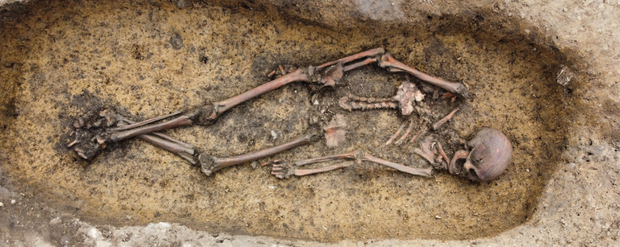
You must be logged in to post a comment Login